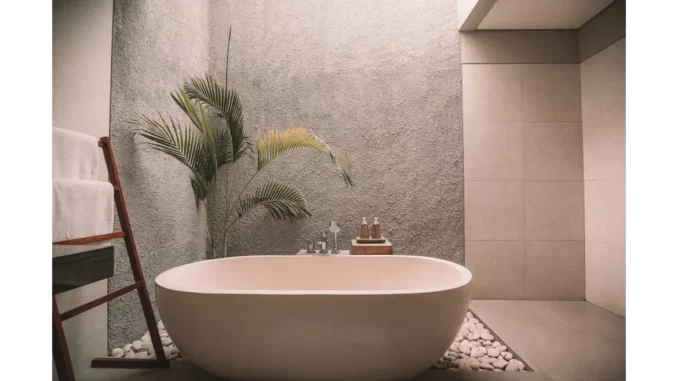
When I sat down with Sarah Thompson, a wellness enthusiast and self-care advocate, I was eager to gather her insights on crafting the perfect relaxing bath. Her serene presence and glowing skin were testament enough to the benefits of her routine. Sarah graciously shared her step-by-step process, which she has perfected over the years, focusing particularly on the use of Epsom salts to enhance the experience.
Setting the Mood
“The first thing I do,” Sarah began, “is set the mood. It’s crucial to create a tranquil atmosphere. I always light a few scented candles around the bathroom. The soft glow from the candles is much more soothing than the harsh bathroom lighting.” She continued, “Sometimes, I even diffuse essential oils like lavender or eucalyptus. It transforms my bathroom into a mini-spa.”
Perfecting the Water Temperature
Next, Sarah emphasised the importance of water temperature. “Running the bath with warm water is key. It shouldn’t be too hot, as that can be uncomfortable and even counterproductive if you’re trying to relax. On the other hand, cold water won’t help your muscles to relax properly. I usually check the temperature periodically to ensure it’s just right—warm but not scalding.”
The Magic of Epsom Salts
Sarah’s eyes lit up when she spoke about Epsom salts. “This is where the real magic happens,” she smiled. “I add about one to two cups of Epsom salts to my bath water. The salts are phenomenal for soothing sore muscles. After a long day or a strenuous workout, this makes a world of difference. And it’s not just about muscle relief; Epsom salts can also help reduce bloating.”
She explained the science behind it: “The magnesium in the salts gets absorbed through your skin and helps to relax your muscles and reduce inflammation. Plus, they act as natural exfoliants, leaving your skin softer and smoother.”
Sarah also mentioned experimenting with different types of Epsom salts. “I love using lavender-scented Epsom salts for an extra layer of relaxation. The aroma is calming and really helps to set the mood.”
Adding Personal Touches
To maximise comfort, Sarah suggested using a bathtub pillow. “You can easily find one online with suction cups that stick to the tub. Or, if you prefer, you can roll up a towel and place it under your head. This support makes a huge difference when you’re trying to unwind.”
Curating the Perfect Soundtrack
“Music is another important element,” Sarah noted. “While it might be tempting to catch up on your favourite podcast, I recommend creating a calming spa playlist. Soft, instrumental music works wonders for setting a peaceful tone. As you listen, take some deep breaths. This is a perfect time to do some stress-reducing breathing exercises.”
Savouring the Moment
“Why not make your bath an indulgent experience?” Sarah suggested. “Pour yourself a glass of red wine or make a cup of chamomile tea. This is your time for self-care, after all. I often use a bath caddy—a small wooden tray that hooks onto either side of the bath. It’s perfect for holding my drink, a book, or even some dark chocolate.”
The Afterglow
As our conversation drew to a close, I asked Sarah if her bath routine always helped her de-stress. She was candid in her response. “Most of the time, it does. But if I find that I’m still feeling anxious or stressed, I try to address the root cause. Sometimes, no matter how relaxing the bath, there’s an underlying issue that needs attention.”
She added, “For some, stress and anxiety might be linked to genetic predispositions. It’s worth exploring all avenues if you’re finding it hard to unwind.”
Sarah’s approach to bath time was not just about physical relaxation, but also about creating a sanctuary for mental calm. Her detailed guide serves as an excellent blueprint for anyone looking to incorporate this soothing ritual into their self-care routine.
By following Sarah’s tips, you can turn your bathroom into a haven of tranquillity, ensuring that your bath time becomes a cherished part of your self-care regimen.
Emily


Be the first to comment